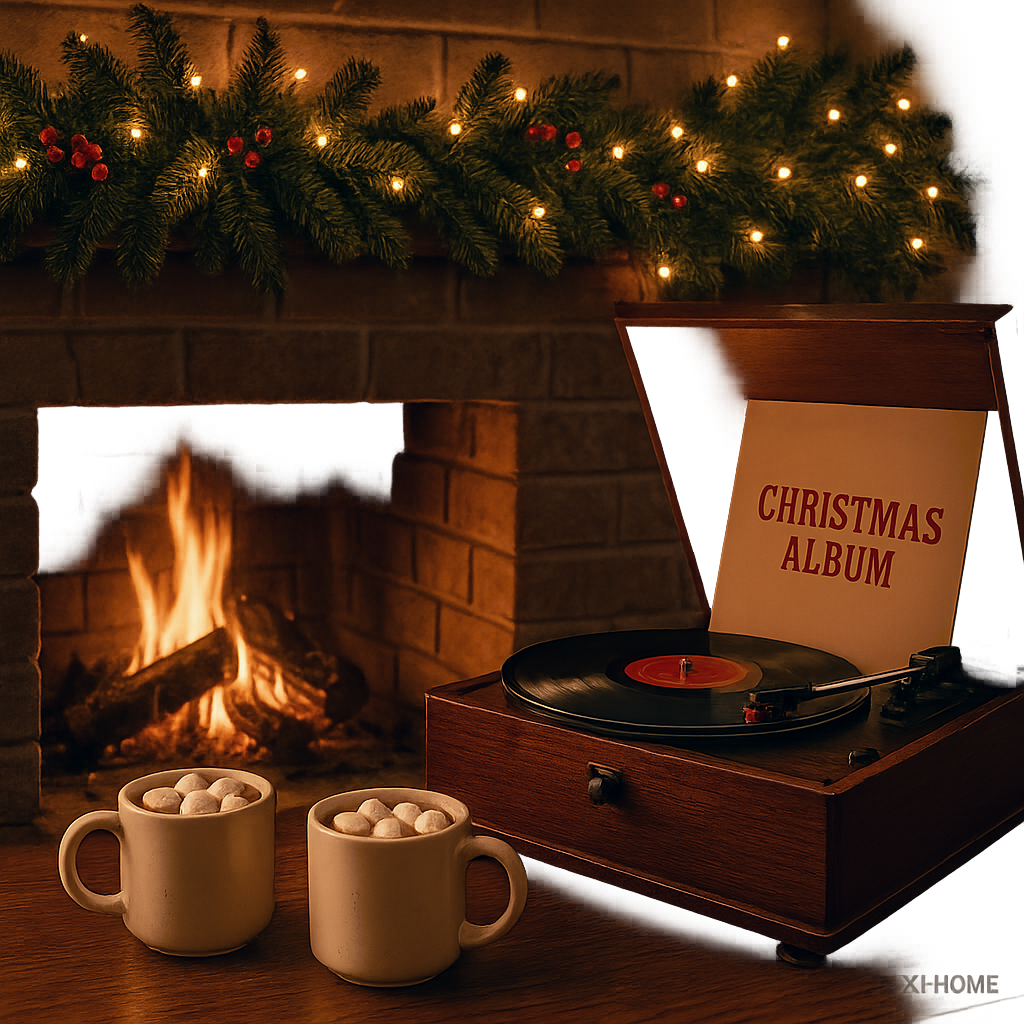The vinyl revival has brought with it a fascinating spectrum of playback options, from all-in-one suitcase players promising nostalgic charm and portability to sophisticated component systems dedicated to extracting every nuance from the groove. The choice between a portable record player and a traditional home setup isn't just about where you listen; it's about how you listen, what you prioritize, and your long-term relationship with your record collection.
As enthusiasts, we're drawn to the tangible nature of vinyl, the ritual of playback. But does convenience trump fidelity? Or is the pursuit of sonic excellence worth the investment in a dedicated space? Let's dissect the pros and cons, moving beyond surface-level appeal to the core realities that impact your music and your records.
Part 1: The Allure of Portability - Vinyl Anywhere, Anytime?
Portable record players, often styled as retro suitcases or compact units with built-in speakers, have undeniable appeal, especially for newcomers or those with limited space.
Pros of Portable Record Players:
-
Convenience & Portability: This is their raison d'être. Take your tunes to a friend's house, a picnic (brave soul!), or simply move it from room to room with ease. No complex wiring or multiple components.
-
Nostalgia & Aesthetics: Many models tap into a retro vibe that's visually appealing and evokes a sense of fun. They can be a charming decorative piece.
-
Entry-Level Accessibility: They often represent the lowest financial barrier to entry for playing vinyl records, making them attractive to the curious.
-
Space-Saving: Their all-in-one design is ideal for small apartments, dorm rooms, or minimalist setups.
-
Simplicity: Usually plug-and-play, requiring minimal setup beyond plugging in the power cord.
Cons of Portable Record Players:
-
Sound Quality Compromises: This is the most significant trade-off.
-
Built-in Speakers: Small, often low-quality speakers housed in the same resonant chassis as the turntable mechanism are a recipe for thin, tinny, and distorted sound. Bass will be lacking, and clarity will be poor.
-
Tonearm & Cartridge: Typically feature very basic, non-adjustable tonearms and inexpensive ceramic cartridges with high tracking forces (often 5 grams or more). This is considerably higher than the 1.5-2.5 grams typical of decent magnetic cartridges.
-
-
Potential for Record Wear: Those heavy tracking forces and less-than-refined styli can cause accelerated wear on your precious vinyl. While a few plays might not destroy a record, consistent use on such a player is not ideal for preserving your collection. For a deeper understanding of stylus types and their impact on record wear, this overview from Shure (a respected cartridge manufacturer) offers valuable insights, though it's focused on higher quality styli, the principles of tracking force and wear are relevant.
-
Limited Upgradeability: What you buy is generally what you get. There's usually no path to upgrade the cartridge, tonearm, or internal electronics.
-
Build Quality & Durability: Often constructed with less robust materials to keep costs down, which can impact long-term durability and vibration control (or lack thereof).
-
Vibration Issues: The motor, speakers, and platter being in such close proximity within a lightweight enclosure means vibrations are a constant enemy, further muddying the sound.
The Human Element: The appeal of a portable is often emotional – the fun factor, the ease. But human nature also dictates that if the sound is grating or if we fear for our records, that initial joy can fade.
Part 2: The Home Sanctuary - Dedicated to the Groove
A traditional home record player setup, typically involving a separate turntable, amplifier, and speakers, represents a more dedicated approach to vinyl playback.
Pros of Home Record Players (Component Systems):
-
Superior Sound Quality: This is the primary advantage.
-
Component Synergy: The ability to choose and match individual components (turntable, cartridge, phono preamp, amplifier, speakers) allows for a system tailored to your listening preferences and budget, capable of delivering nuanced, dynamic, and immersive sound.
-
Proper Turntable Design: Better tonearms, higher quality cartridges (usually moving magnet or moving coil), more precise motor control, and plinth designs focused on minimizing vibration and resonance.
-
-
Better Record Care: Lower tracking forces, higher quality styli, and more stable platforms mean your records are treated with greater respect, leading to longer life and preserved sound quality.
-
Upgradeability & Customization: The modular nature allows you to upgrade individual components over time as your budget and desires evolve. Want a better cartridge? A new phono stage? It's all possible.
-
Long-Term Investment: Well-chosen components can last for decades and often retain good resale value. This is the path to building a system that grows with you.
-
Deeper Engagement: The process of selecting components, setting up the turntable correctly (VTA, azimuth, tracking force), and optimizing speaker placement fosters a deeper understanding and appreciation of the audio chain.
Cons of Home Record Players:
-
Cost: Generally, a higher initial investment is required for a quality component system compared to an all-in-one portable.
-
Space Requirements: Separate components and larger speakers naturally require more dedicated space.
-
Complexity (Perceived or Real): For newcomers, the idea of matching components and dealing with wiring can seem daunting, though it's often simpler than it appears.
-
Lack of Portability: These systems are designed to stay put.
Part 3: Bridging the Gap - Is There a Middle Ground?
The market does offer some options that attempt to find a balance:
-
Higher-Quality "Lifestyle" Systems: Some brands offer more compact, stylish integrated systems that include a decent quality turntable section with better components than typical suitcase players, paired with separate, albeit often smaller, speakers. These can be a good step up from basic portables.
-
Using a Portable for Non-Critical Listening: Some audiophiles with serious home systems might still own a basic portable for very casual use in a workshop, on a patio, or for sifting through bargain bin finds before cleaning them and playing them on the main rig. The key here is awareness of its limitations and reserving it for non-critical applications.
Part 4: The XJ-HOME Perspective - Intentional Listening
At XJ-HOME, we believe that the way you engage with your music is a deeply personal choice. However, we also champion the pursuit of quality and the preservation of the artistic intent captured in those vinyl grooves. While the convenience of a portable player has its place, for true immersion and to honor both the music and the medium, a well-thought-out home system is unparalleled.
The decision often comes down to your primary intent:
-
If your goal is casual background music, novelty, or dipping a toe into vinyl with minimal commitment and maximum ease, a portable might suffice, with the strong caveat about potential record wear.
-
If your goal is to truly listen, to connect with the music on a deeper level, to appreciate the nuances of a recording, and to preserve your valuable record collection, then investing in a quality home turntable setup is the path we advocate.
This doesn't mean elitism; it means recognizing that tools designed for different purposes yield different results. You wouldn't use a toy hammer to build a house. Similarly, a device designed primarily for portability and low cost will inherently make compromises that affect sonic performance and record longevity. Resources like AudiophileReview.com often discuss the balance between convenience and fidelity in various audio components, which can provide broader context.
Conclusion: Choose Your Path Wisely
Ultimately, the "best" record player is the one that aligns with your listening habits, your respect for your collection, and your sonic aspirations.
-
For the curious beginner or the ultra-casual listener with a small collection of non-valuable records: A portable might be a starting point, but be aware of its limitations and the potential for record wear.
-
For anyone serious about sound quality, building a lasting collection, and experiencing the full magic of vinyl: A dedicated home turntable and component system is the clear recommendation.
The journey into vinyl is a rewarding one. Choosing the right playback gear is a crucial first step in ensuring that journey is filled with exceptional sound and well-preserved records for years to come. At xenonjade.com, we encourage you to explore the options, educate yourself, and invest in a setup that will bring you lasting joy.
Happy listening, whether at home or (cautiously) on the move!





Leave a comment
All comments are moderated before being published.
This site is protected by hCaptcha and the hCaptcha Privacy Policy and Terms of Service apply.